Colombia by MAZDA6: An Adventure In Magical Realism
Colombia is now enjoying an age of peace and prosperity. Tourism has rapidly increased to match, with 2.5 million foreign visitors in 2015. And there is plenty for them to see: lush rainforests, Caribbean beaches, stark deserts and craggy Andean peaks, and an exuberant culture that reflects a fascinating mix of Spanish, African and indigenous heritage.
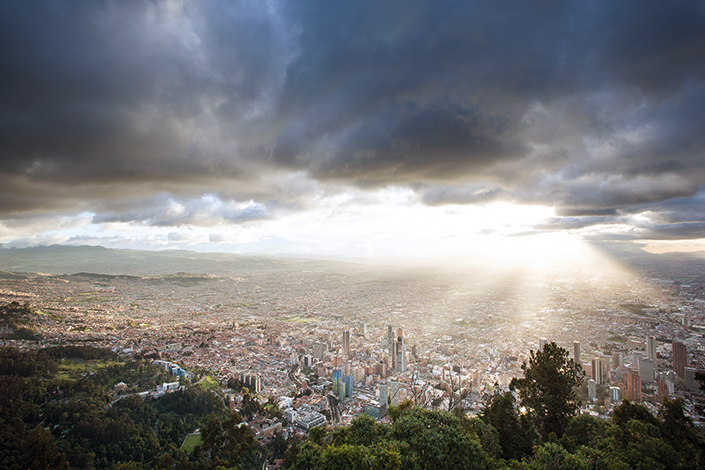
(Heady view of Bogotá from Monserrate Hill)
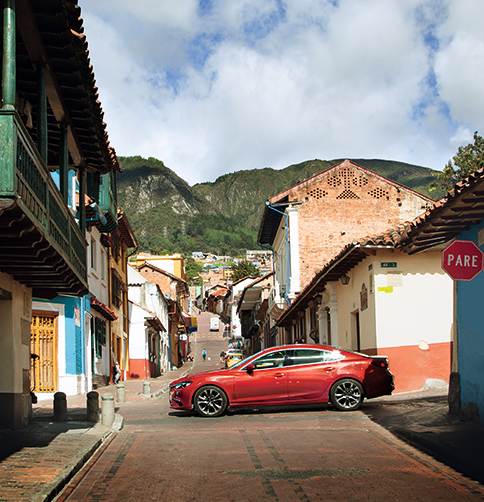
(La Candelaria’s picturesque streets)
We are in Bogota, beginning a 2,000-km cross-country journey in a Mazda6, to explore this effervescent South American country. From the colourful backstreets of La Candelaria to the trendy neighbourhood of Usaquén, the new generation of Colombians is eagerly seizing the many opportunities to rediscover and popularise their rich heritage.

(Café Catación Pùblica, a new venture by Jaime Raùl Duque re-discovering Colombia’s soul through coffee)
The journey begins in a swirl of misty hills and rain-soaked greenery as we head north out of Bogota. Colombia is a supremely fertile land, with everything from coffee and tobacco to sugarcane and various exotic tropical fruit cultivated here. An enjoyably twisty section off the highway at San Gil brings us to Barichara.
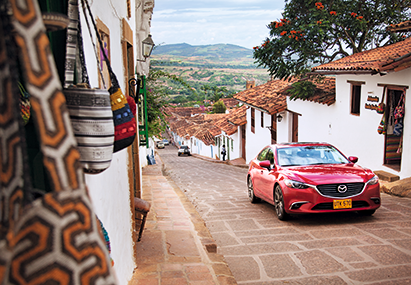
(Barichara’s colonial architecture)
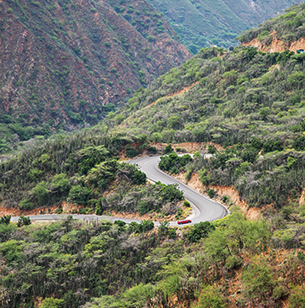
(Winding roads of Chicamocha Canyon)
With rows of low, whitewashed, red-tiled houses with painted wooden doors arranged on steep slab-paved streets, this colonial town is perfectly preserved, like a ladybird in a chunk of amber, to be held up to the light and marvelled at. Further ahead, the 2km-deep Chicamocha canyon, now a national park and adventure sports zone, hosts a snaking road that’s a drivers’ delight.
After Bucaramanga, the road begins to flatten out as it enters the hot, humid plains. We traverse the Mompox Depression, a vast area of wetlands, marshes and freshwater islands formed by the Magdalena River. Once off the main highway, the rural road becomes rough, and we eventually arrive at Mompox coated with dust. Sipping a fizzy drink at a café in the town’s small central plaza, nosing past donkey-carts in quiet alleyways, or strolling by the riverside, we can see how Mompox inspired famed Colombian author Gabriel García Márquez’s depictions of his fictional sleepy town of Macondo.
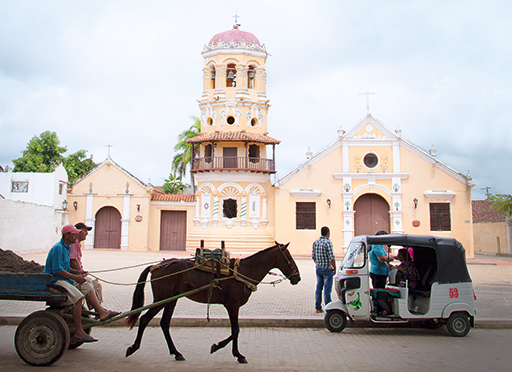
(Gentle pace of life in sleepy Monpox)
A 40-minute ride aboard the well-worn ferry Mompox 450 Años upriver to Yati trims a hundred-odd miles from our road route, but there are enough straight bursts and flowing switchbacks left to give the Mazda6 ample chances to show off its dynamic best. Darkness falls by the time we enter Cartagena de Indias, which is pulsatingly alive on a Saturday night. During the time of the Viceroyalty of New Granada, as the Spanish Empire’s regional territory was known, Cartagena was a key trading port that funnelled gold and silver to Spain. Today, it’s still an important economic and touristic hub.
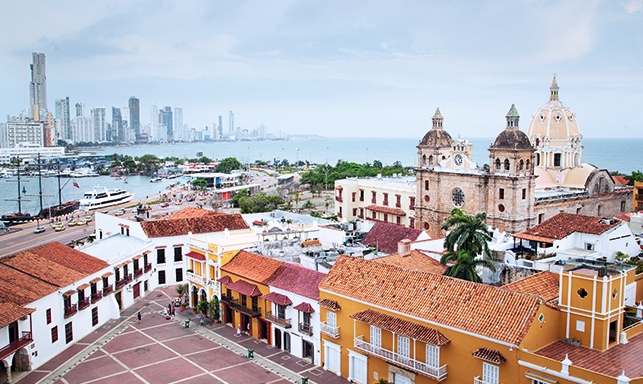
(The historic Caribbean city of Cartagena)
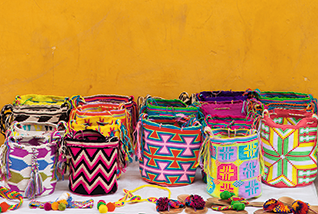
Sip on a chilled tender coconut and walk through its 500-year-old walled old town for a visual feast of period architecture, bright colours, weathered doors, wrought-iron lamps, intricate balconies, and sprays of flowering bushes. Music in the air, a lively hubbub on the streets, the sea breeze dancing by as we eat a juicy fruit platter in the market square… Cartagena is indeed a real charmer.
Past Barranquilla, the road begins to flirt with the sea, and we stop more than once to drink in the simple but satisfying sight of red car, green palms and blue water. Near Santa Marta, we visit the memorial to the inspiring independence hero Simon Bolívar, before continuing to make our way east, into the arid province of La Guajira – home to the Wayuu, the indigenous people of this remote, semi-autonomous region.
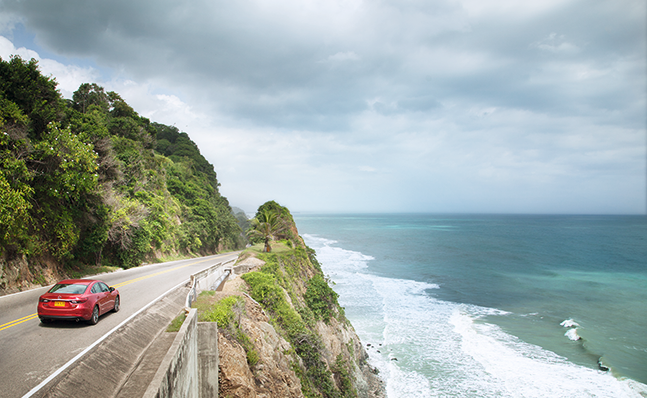
(The relaxing vistas of Colombia’s Caribbean coast)
The afternoon passes in a blur of sandy two-lane blacktop lined with cacti and brush. After Uribia, we turn off the tarmac entirely. Within minutes, we are in the desert, skimming across a sprawling expanse of dry, cracked, salt-flecked mud, under a vast sky. The searing late-afternoon sun lights up our dust trails as we make wide loops to avoid the odd moist patch. This is now proper SUV territory, but the Mazda6 performs admirably, feeling as composed as it did back in Bogotá.
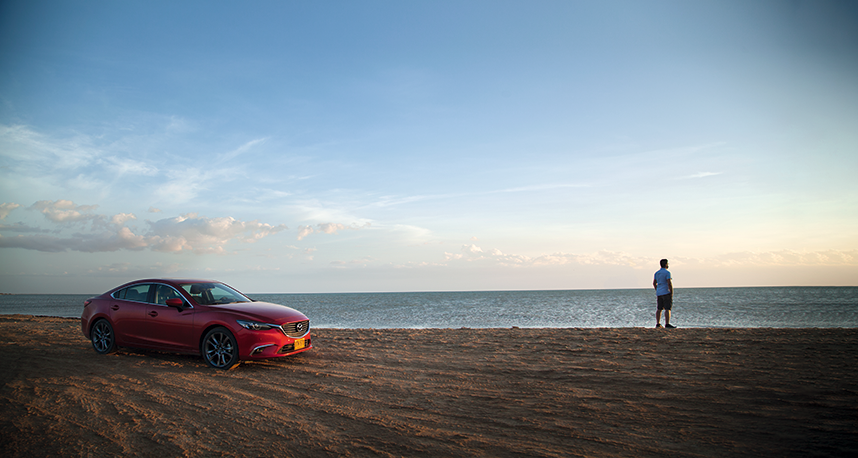
And then, the sea breaks through. Here we are at last: Cabo de la Vela, or the Cape of Sails, where the conquistadors first made landfall in 1499, and where the Wayuu believe the souls of their ancestors still live on. There’s a sense of peace as we stare out over the open water, with the golden sun slowly dipping into the horizon – and triumph, too: we’ve made it to the top of the continent. The Mazda6 has been a real champ, taking everything we threw at it, while Colombia has been spectacular — a beautiful land and people that deserve all the joy they can get.
Other Stories
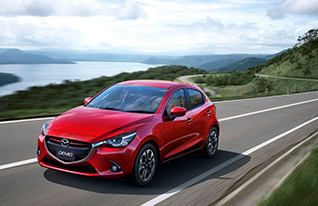
Driving stories on the great & challenging roads and journeys

Stories about the craftsmanship and design evolution of Mazda

Visions and philosophies of Mazda engineers
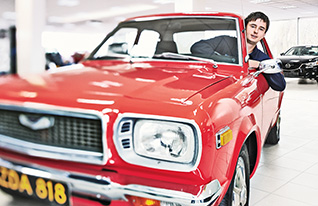
The spirit of Mazda owners, collectors, clubs and aficionados around the world

Mazda brand heritage and history

